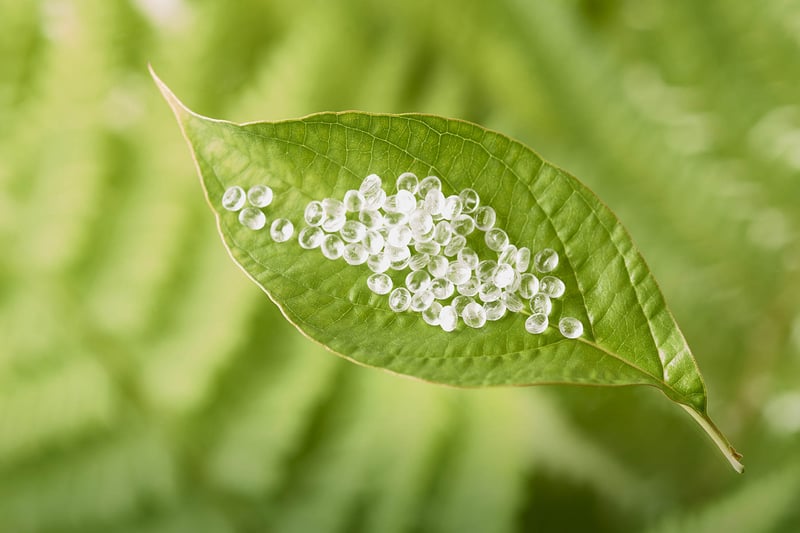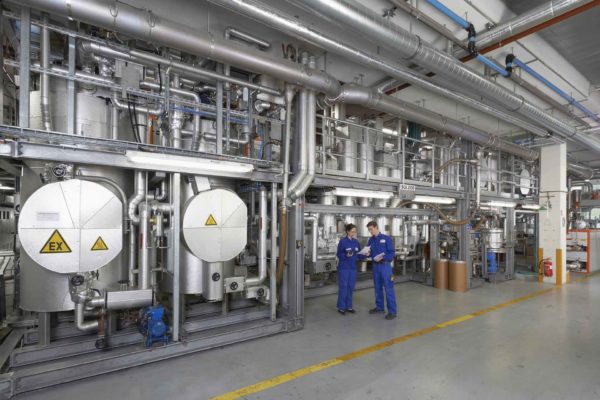 Polylactide (PLA) is a promising sustainable alternative to widely used plastics that originate from non-renewable fossil resources and are often non-recyclable.
Polylactide (PLA) is a promising sustainable alternative to widely used plastics that originate from non-renewable fossil resources and are often non-recyclable. Leading technology for bio-based plastics
Sulzer’s integrated polylactide technology helps to build a sustainable future
Bio-based, biodegradable and 100% recyclable to a virgin form — these are the main advantages of plastics made from polylactic acid (PLA). With a longstanding experience in lactide purification and PLA polymerization, Sulzer delivers process know-how and key equipment in this sector.
Alex Battù and Simone Ferrero, from the Polymer Technology group, look at the benefits of PLA and the plant requirements for manufacturers.
There are sustainable alternatives to almost any conventional and often non-recyclable plastic originating from non-renewable fossil resources. One possible substitute is PLA — a thermoplastic polymer obtained by polymerization of lactic acid (LA) monomers from starch or sugar-rich crops such as corn, wheat, sugar cane, sugar beet and many other cellulosic materials.
This broad range of suitable feedstock allows process industries worldwide to use different plant-based resources in accordance with their local availability.
The resulting bioplastic features mechanical and thermal properties that are comparable or superior to its traditional oil-based counterparts. Thus, the material can be used in a wide range of applications, such as packaging, 3D printing processes, textiles, electronic devices and components for the automotive sector. In addition, thanks to PLA’s biocompatibility, it can be safely used for sterile packaging, medical devices, equipment such as suture yarns, and implants, like bone screws. Furthermore, the possibility to produce PLA composites, such as foamed PLA, further expands the range of applications for this bioplastic.
Process steps for PLA production
Converting sugar into PLA plastic involves several steps. First, sugars are fermented to generate LA. This is polymerized through a polycondensation reaction into a prepolymer with low molecular weight, which is then converted, through a catalytic reaction, into lactide. This intermediate product is then purified with distillation and crystallization equipment before being polymerized to PLA. Depending on the final product application, coloring or additives can be added to the melt. Finally, PLA can be converted into solid pellets in order to be easily transported or stored.
The process to produce PLA was patented in 1954, but it took almost 50 years for this plastic to be used in large quantities. In fact, agricultural, chemical and fiber industries struggle to find a reliable partner, able to provide integrated solutions that address all the aspects and stages of PLA production.

With over 25 years of experience in every aspect of PLA production, Sulzer is a reliable partner able to support the implementation of comprehensive PLA technologies.
Sulzer PLA technology
In order to support and promote the shift towards sustainable PLA-based plastic, three major process equipment specialists, Sulzer, Futerro and TechnipFMC, have formed the PLAnet partnership. With over 25 years of experience in purification and polymerization technologies, Sulzer and its partners can design and deliver turnkey modular solutions for small and large PLA manufacturing lines, with capacities up to 100’000 tons per year. Sulzer offers several additional services to ensure that customers in the agricultural, chemical and fiber sectors can continuously benefit from their integrated PLA technology.
More precisely, installation supervisors and start-up engineers provide support during the assembly, installation, commissioning and start-up of the equipment. Also, the operation and maintenance training offered by Sulzer helps plant operators to thoroughly understand the system. Finally, to assist customers in maximizing the performance and service life of their equipment, the company also provides recommendations and guidelines on the best maintenance practices.
Sulzer’s solutions for PLA
The foundation of high quality PLA lies in highly purified monomers. Sulzer’s distillation and falling film crystallization technologies enable the optimal purification of lactide. In this way, manufacturers can keep the yellowness index of their plastics low, in compliance with stringent regulations, such as ISO 17223:2014.
Also, keeping a suitable and homogeneous process temperature and thoroughly mixing the materials are key factors contributing to the quality of PLA. This can be particularly challenging in conventional polymerization equipment. To address this challenge, Sulzer offers special mixer reactors that combine mixing, heat transfer and reaction activities. This equipment, known as Sulzer Mixer Reactor (SMR™), features a particular design, able to provide uniform temperature distribution and homogenous mixing.
Subsequently, Sulzer’s devolatilization technology can be used to remove volatile components from the PLA melt in a time-efficient manner, to avoid polymer degradation and achieve high-quality end products.
All these solutions are fully scalable and can accommodate variable production volumes, allowing manufacturers to expand their business up to 100’000 tons of PLA per year per line.
Additional benefits of Sulzer’s equipment
Sulzer technology provides the flexibility to easily adapt the properties of PLA within one single installation. For example, there is no need to use different process lines to produce plastics with different molecular weights or L/D – ratios, suitable for different market applications.
Scale-up proven in industrial use
With the support of Sulzer, one of the world’s top two PLA manufacturers developed a large plant able to produce 75’000 tons per year of PLA plastics for a wide range of applications, including heat-resistant PLA composites for use in coffee pods. Specialized and highly qualified teams from Sulzer performed extensive laboratory and pilot testing and proposed a customized design that met the plant and manufacturing requirements. Thanks to Sulzer’s expertise, the PLA producer is now able to deliver high-quality bioplastic solutions for a greener future.









